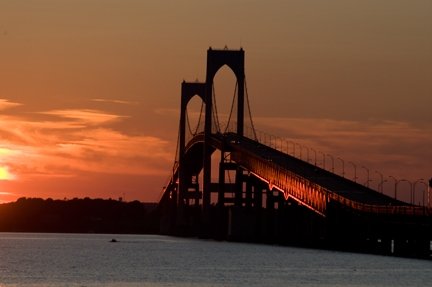This will be the first installment in a series of posts intended to be an introduction to photography. I'll try to keep it as simple as possible, but being a geek by nature, I may go on a bit of a tangent here and there, so please bear with me. Also, I'm a Nikon guy, so most of the time, I'll likely using their terms.
Before I really get started, I have a quick note. I was recently asked by someone who is looking at getting their first digital SLR for recommendations on how to learn to use it. This was, not surprisingly, the final push for me to start writing these articles. My initial reaction was to say, "get out and use it." Since then, I've thought of another one. Read the manual. Don't expect to remember anywhere close to all of it, just get the basics of the controls, and know where to look for answers. I've had my current camera for a couple years now, and know the controls I use all the time like the back of my hand. Sometimes, though, I come across the need to use a feature that I've never used before, or one that I use so rarely, that I still have to look it up. That's OK. Modern cameras a so complicated, there are features that few people ever use.
On to the original point of this post...
A wise man once said that a camera is just a black box with a controllable hole in it. This is entirely true, and learning exactly what's going on when you change the controls opens up a whole new world of images. Most people never get past the "program" setting, which allows the camera's computer to make all the decisions. This is fine in some circumstances (I still use it on occasion), but the quality of the output is limited.
My intent in the next few (maybe several) posts is to help people get past this.
When I first started playing with cameras, once the film was loaded, there were two things in the camera that affected the exposure: aperture and shutter speed. With the advent of digital photography, a third thing was entered into the mix- ISO (film speed). Together, I'll refer to them as the trinity. I'll be explaining each of them individually later in separate posts.
Aperture refers to the size of the hole in the lens that lets light through to the sensor. If someone is discussing the details of an exposure, you'll see it as a decimal number: 3.8, 16, 5.6, etc. On lenses not made specifically made for digital cameras, there's a ring just in front of where it mounts to the camera (not surprisingly called the lens mount) with the same numbers on it. This is where we used to adjust the aperture. There is some math you can do to figure out what the size of the hole is, and I'll touch on that later. For now, all that needs to be understood is that the smaller the number, the larger the hole in the lens, so more light will be reaching the sensor all at once.
The second part of the equation is the shutter speed. This refers to the amount of time the sensor is exposed to the light, usually refered to as a fraction, e.g. 1/250(th of a second)in the camera's viewfinder, it will likely be listed as a whole number with a quotation mark after it. This is an important thing to notice. When the viewfinder says 250, that's 1/250th of a second; when the viwfinder says 250", that's 250 seconds- huge difference. The longer the shutter speed, the more light will hit the sensor; it also means a greater amount of time that neither the photographer nor their subject can move without blurring.
Third is the ISO. This is actually a holdover from the days of film (which aren't actually dead yet); when we would have to think about what the light levels would be like where and when we would be shooting, and choose a film speed accordingly. The differences were in the chemistry of the film itself, up to and including the size of the light sensitive crystals. The lower the ISO number, the slower it reacts to light. Digital photography has made this a variable option.
There are a couple reasons that all of this is necessary to understand. First and foremost, digital sensors act the same way as film. If you send too much light at them all at once, your image will be either way too light, if not full white. Not enough light has the opposite effect, everything fades to black.
Now that I've thoroughly scared off anybody even slightly interested, I'm going to stop to allow for a reread. I swear I'll do my best to explain how all this works together.
